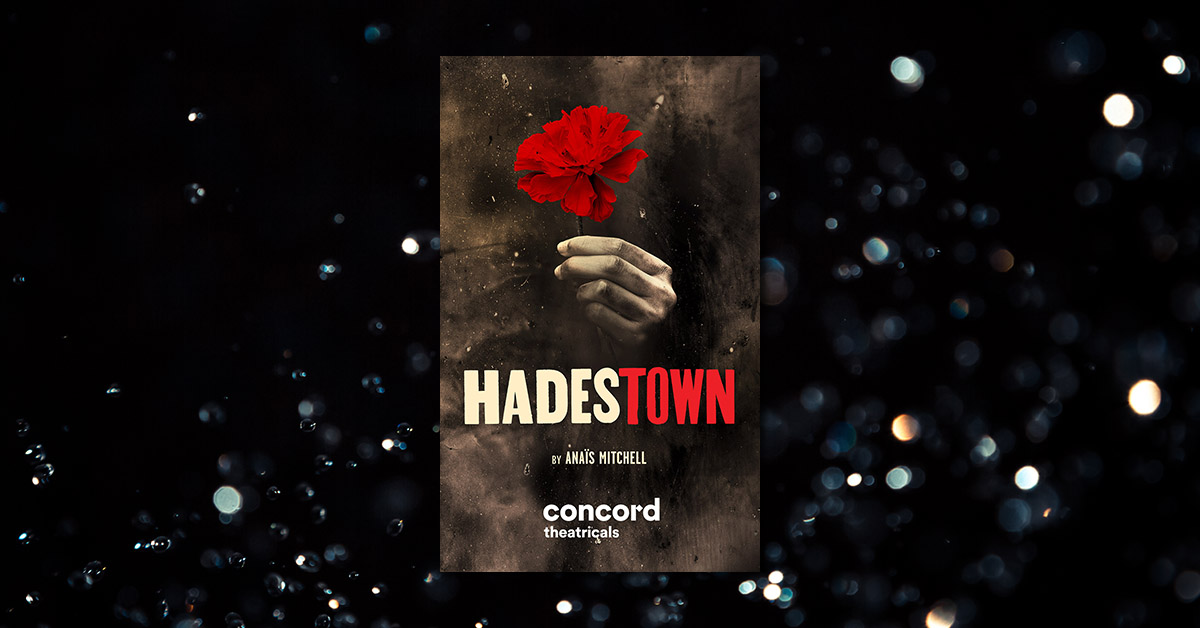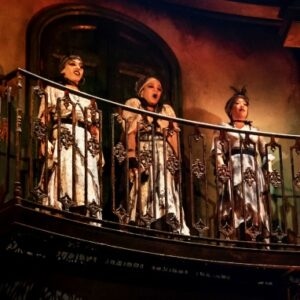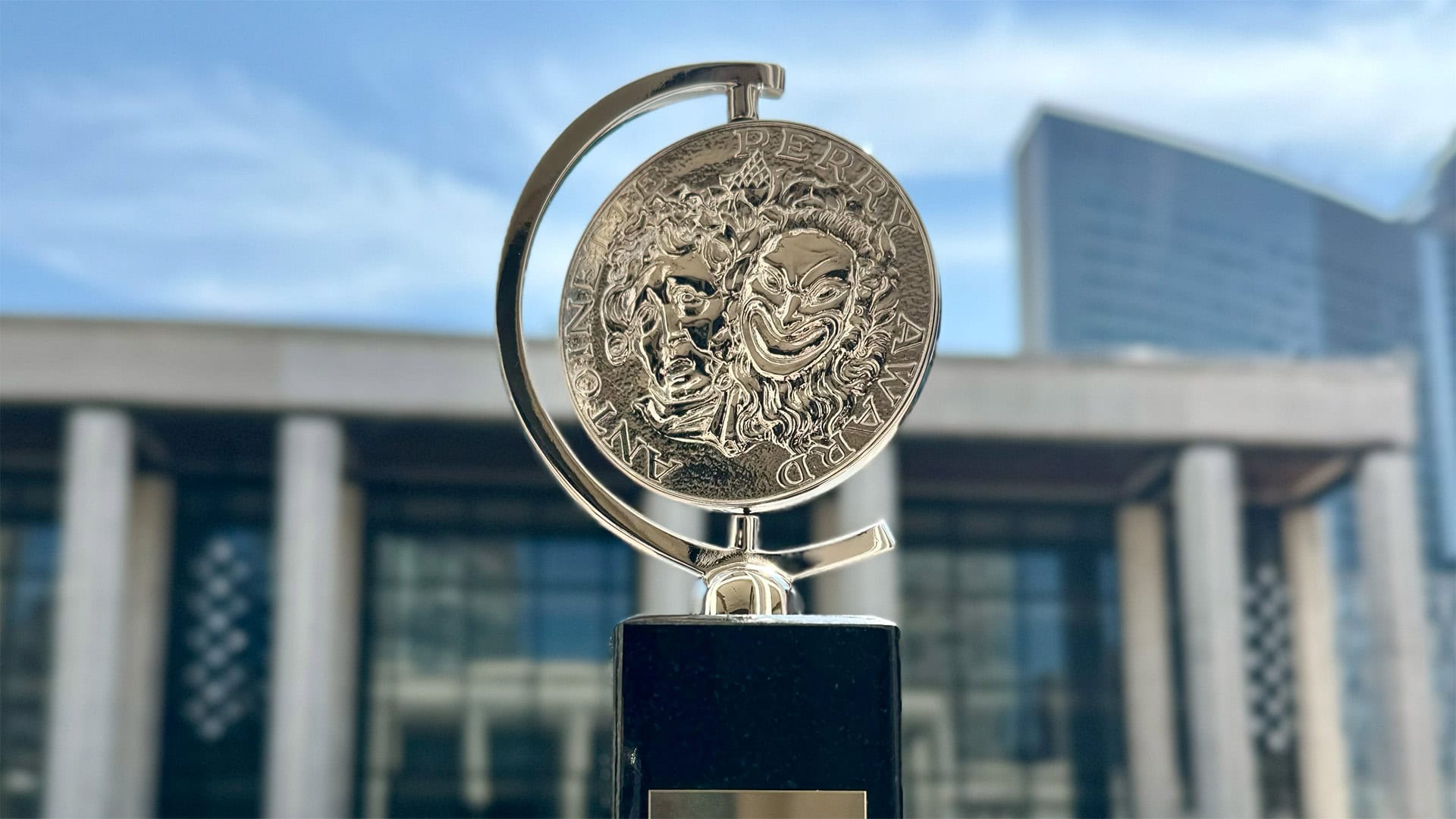
Orpheus. Eurydice. Hades. Persephone. Hermes. The Fates.
The stories of Greek gods and heroes have been told countless times, in many ways. In 2006, one of the most well-known of these myths would be told again through Anaïs Mitchell’s theatre project Hadestown (US/UK), which would take Broadway by storm in 2019. This gorgeous folk opera intertwines two ancient love stories – that of young dreamers Orpheus and Eurydice, and that of immortal King Hades and lady Persephone – breathing new life into its characters and delivering a defiantly hopeful theatrical experience through its tragic tale.
But how do Hadestown’s characters and their stories differ in mythology and on the stage? Learn more below.
A warning for new Hadestown fans: you’ll find spoilers ahead!
 ORPHEUS
ORPHEUS
In Hadestown:
Abandoned by his mother, a muse, Orpheus was taken under the wing of her friend Hermes, herald of the gods. A gifted poet and lyre-player, he works to write a song to make spring come again, ending a harsh winter and famine. He meets Eurydice when she is seeking reprieve from the cold and immediately falls in love. Naïvely optimistic, he promises that his song will allow him to provide a safe, comfortable life for them in marriage.
Though he loves Eurydice, he is so focused on fulfilling this promise that he fails to see her hunger and suffering. Only when told by Hermes does he notice that she has disappeared to the underworld. Determined to rescue her, he takes the treacherous journey to Hadestown in the hopes that his song will inspire its king to grant her freedom. The song is Hades and Persephone’s own love melody, and the lovers are granted a challenge: to walk the long journey out of Hadestown together, with Orpheus leading the way. If they trust each other and make it to the sunlight, she will be released. If he turns back to ensure that Eurydice follows, she must remain below.
But the journey shakes Orpheus’ positive, hopeful nature. Just as the world above comes into view, is overcome with doubt and insecurity. He turns back to ensure she is following, and she disappears. This is where his story ends, to be told again and again.
In mythology:
While it is true that Orpheus is son of a muse, he was not neglected and taken in by Hermes – rather, versions of his tale tell that his talent for singing was taught to him by his mother, and for the lyre by his father Apollo, the god of music and dance. Orpheus’ legends extended far beyond his story with Eurydice, including journeying with the Argonauts. However, the lovers’ tale was simpler: the two married without conflict or famine, and Orpheus’ great song was not that of Hades and Persephone, but written for Eurydice on their wedding day.
As in Hadestown, Orpheus journeyed to the underworld to save Eurydice after her death, charming all in his path with his love song, and faced Hades’ challenge. But after he turned to see Eurydice and lost her to the underworld forever, his story got sadder still. In one common telling, Orpheus took his life to join her. In another, he shunned mankind and gave up music, only to be murdered by the Maenads, the female followers of the god Dionysos.
 EURYDICE
EURYDICE
In Hadestown:
Eurydice is a tough, jaded runaway who finds herself vulnerable in the long winter. Though she has never trusted others and prefers to rely only on herself for survival, she feels hopeful when the song Orpheus is writing creates a sign of spring, and she agrees to marry him. Though she finds that she loves him very much, time passes and he still has not completed the song, leaving her to provide for them both. Cold, hungry and desperate, she decides to accept an offer from Hades to join him in the underworld: in exchange for her eternal labor, she will for the first time have consistent food and shelter.
Once in Hadestown, she regrets her choice as her memories of freedom and love begin to fade. As she later follows Orpheus to the world above, she calls to him to trust that she follows, though this reassurance goes unheard.
In mythology:
Little is written about Eurydice outside of her being the wife of Orpheus and the inspiration for his legendary journey. She is commonly known to have been a Dryad (tree nymph) or Auloniad (mountain pasture nymph), though she is sometimes referred to as a daughter of Apollo.
Rather than deciding her own fate, she was taken to the underworld against her will after a poisonous snake bit her on the ankle – sometimes it is said that this occurred on her wedding day. Later versions of the tale say that the bite occurred as she fled an attack by the demigod Aristaeus, in the form of a swarm of bees. In the underworld, she waited for Orpheus until his attempted rescue. Soon after, they would reunite in Elysium – an utopian afterlife reserved for heroes and mortal children of the gods.
 HADES
HADES
In Hadestown:
Hades is the stern boss-king of Hadestown. He and his wife Persephone were once deeply in love; she left her life above to rule the underground with him, but she returns for half of each year to bring spring to the Earth. They were happy for a time, but Hades grew lonely and jealous in her absence. He began to return her to the Earth later, and bring her to the underworld earlier each year, creating prolonged winters and the famine from which Orpheus and Eurydice suffer. As Persephone begins to resent him for holding her hostage, their marriage becomes strained, and he misses the love they once shared even more.
To fill this void and as a gesture of love for Persephone, Hades creates an industrial plant, where the souls in his realm must work eternally. Persephone disapproves, and Hades threatens to replace her with someone who will appreciate Hadestown and his efforts. Eurydice then captures his attention, and he extends an offer to save her from the famine of his creation – in exchange for her servitude.
When Orpheus arrives, Hades is unimpressed by his efforts and sees the rescue attempt as a threat to his power. Upon hearing how moved Persephone is by the young lovers, he decides to appease his wife by hearing Orpheus’ song. The song is devastating, opening his eyes to the cold realities of his life and marriage, and he finds himself conflicted; he doesn’t want to appear heartless, but doesn’t want to lose control of Hadestown. The solution is a challenge he is certain they will fail.
In mythology:
Hades, brother of Zeus, Poseidon, Demeter and other powerful gods, was ruler of the underworld, and he played a significant role in many ancient Greek stories. Though, as in Hadestown, he fell in love with Persephone when he saw her picking flowers in her mother’s field, their story’s beginning in classic mythology was far less romantic. Hades kidnapped Persephone and forced her to join him in the underworld. Only when pressured by other gods – via a message conveyed by Hermes – did he agree to set her free, but he first laid a trap: Anyone who ate in the underworld would be bound to it forever, so he secretly forced Persephone to eat six pomegranate seeds. For this reason, she was forced to return for six months out of every year.
Most of Hades’ story in Hadestown, including his plant and creating famine by holding Persephone in the underworld for too long, were created by Mitchell for the musical.
Despite the fact that modern stories often portray Hades as an evil villain, this was often not the case in mythology; he generally appeared to be altruistically inclined, motivated most by balance. In most legends, he was aloof and unknowable, without a distinct personality.
 PERSEPHONE
PERSEPHONE
In Hadestown:
Persephone, once happily sharing her time between Earth and Hadestown, has grown tired of Hades’ controlling behavior. To cope with her circumstances, she drowns her sorrows in dandelion wine. While Hades clings to the relationship they once had by tightening his grip, she does her best to escape, contributing to a vicious cycle of unhappiness for them both.
She is awakened from her constant distraction by Orpheus’ song and the love he shares with Eurydice, as it reminds her of the pure love she and Hades once had. She pleads with Hades to give a chance to both the young lovers and themselves.
In mythology:
Persephone, known as the goddess of spring, was the daughter of Zeus and Demeter, the goddess of harvest and agriculture. After Persephone’s abduction, Demeter created a devastating drought to convince the gods to release her from Hades, only to realize Persephone ate the food of the dead upon her return.
In some versions of their story, Persephone eventually grew to love Hades – in others, she remained with him for half of each year as his prisoner. In either version, she became a protector of the afterlife, stepping in on behalf of heroes, making judgements and executing punishments (something Hades was not known to do). While the majority of her marital conflict in the musical is not found in mythology, both in legends and on stage, she serves as an impassioned foil to Hades’ detached and uncompromising nature.
 HERMES
HERMES
In Hadestown:
A friend of Orpheus’ mother, Hermes took in the young poet after he was abandoned by his parents. Hermes serves as the show’s narrator, providing context and explaining the action to the audience. The musical is framed as a story Hermes is telling – a “sad song” that is to be sung again and again. While Hermes does play a small role in Hadestown’s action, it is almost always in the role of a messenger to Orpheus: for example, telling him that Eurydice went to the underworld, or what Hades’ challenge will be.
In mythology:
Known for his tricks and mischief, Hermes was the god of trade, wealth, luck, fertility, sleep, language, thieves, travel and more. Though his story was intertwined with many great heroes in Greek mythology, including Odysseus and Perseus, he played no significant role in the tales that inspired Hadestown. Orpheus’ mother, often said to be the muse Calliope, was not associated with Hermes.
However, small connections can be made. Hermes was known for inventing the lyre – the instrument played by Orpheus – and giving it to Apollo, his father. Hermes served as a leader of souls to the river Styx in the underworld, much as this character guides Orpheus to Hadestown for Eurydice’s rescue. Perhaps most significantly, Hermes was the messenger of the gods, passing along their messages and stories – just as the character shares the story of Hadestown with its audience.
 THE FATES
THE FATES
In Hadestown:
Three sisters, vicious and delicious, The Fates function as Hadestown’s Greek chorus, commenting on the musical’s action and giving insight as to the thoughts, insecurities and doubts of the story’s characters. This often takes the form of taunting them with sadistic pleasure. However, their actions are passive – simply an artistic reflection of the characters’ own psyches.
In mythology:
The three Fates – Clotho (the Spinner), Lachesis (the Apportioner) and Atropos (the Inflexible) – determined human destinies. Clotho would spin a golden thread of fate, Lachesis would dispense it, and Atropos would cut it, a process beginning and ending a person’s life. Though they were originally portrayed as the young, attractive daughters of Nyx, later myths identified them as the very old offspring of Zeus and Themis, goddess of law and justice. The Fates represented predestiny; humans had free will, but the Fates knew the outcome of their choices, which could not be prevented or changed. In this matter, the both gods and mortals could not interfere.
To learn more about these characters, get the script to Hadestown (US/UK) or Hadestown: Teen Edition (US/UK).
For the US, license a production of Hadestown: Teen Edition here or sign up for updates about licensing Hadestown here.
For the UK, Ireland and International, please sign up on the UK websites for Hadestown and Hadestown: Teen Edition news.

Women and Show Biz: A Conversation with Playwright Peter Quilter

A Pan of Buttermilk Biscuits: Purlie Victorious and Sustenance

